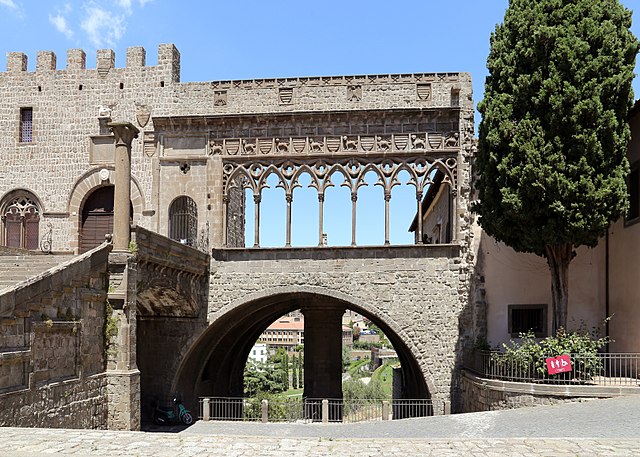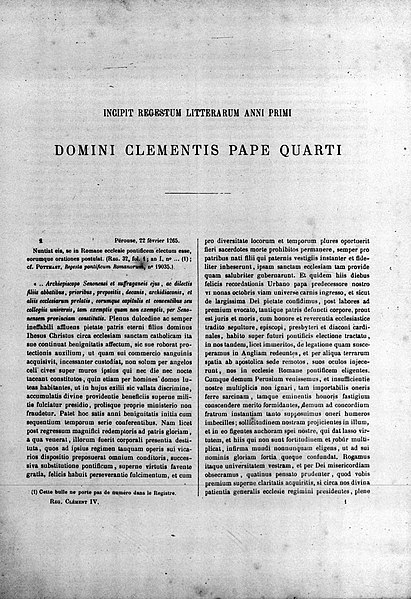The 1268–71 papal election, following the death of Pope Clement IV, was the longest papal election in the history of the Catholic Church. This was due primarily to political infighting between the cardinals. The election of Teobaldo Visconti as Pope Gregory X was the first example of a papal election by "compromise", that is, by the appointment of a committee of six cardinals agreed to by the other remaining ten. The election occurred more than a year after the magistrates of Viterbo locked the cardinals in, reduced their rations to bread and water, and removed the roof of the Palazzo dei Papi di Viterbo where the election took place.
1268–1271 papal election
Palazzo dei Papi di Viterbo, the roof of which was removed in an attempt to speed up the election
The Duomo di Viterbo, where the election began
Saint Philip Benizi, who was allegedly nearly elected after two months
Pope Clement IV, born Gui Foucois and also known as Guy le Gros, was bishop of Le Puy (1257–1260), archbishop of Narbonne (1259–1261), cardinal of Sabina (1261–1265), and head of the Catholic Church from 5 February 1265 until his death. His election as pope occurred at a conclave held at Perugia that lasted four months while cardinals argued over whether to call in Charles I of Anjou, the youngest brother of Louis IX of France, to carry on the papal war against the Hohenstaufens. Pope Clement was a patron of Thomas Aquinas and of Roger Bacon, encouraging Bacon in the writing of his Opus Majus, which included important treatises on optics and the scientific method.
Clement IV depicted in a 13th century fresco
Collection of writings by Clemens, published in Paris between 1893 and 1945






